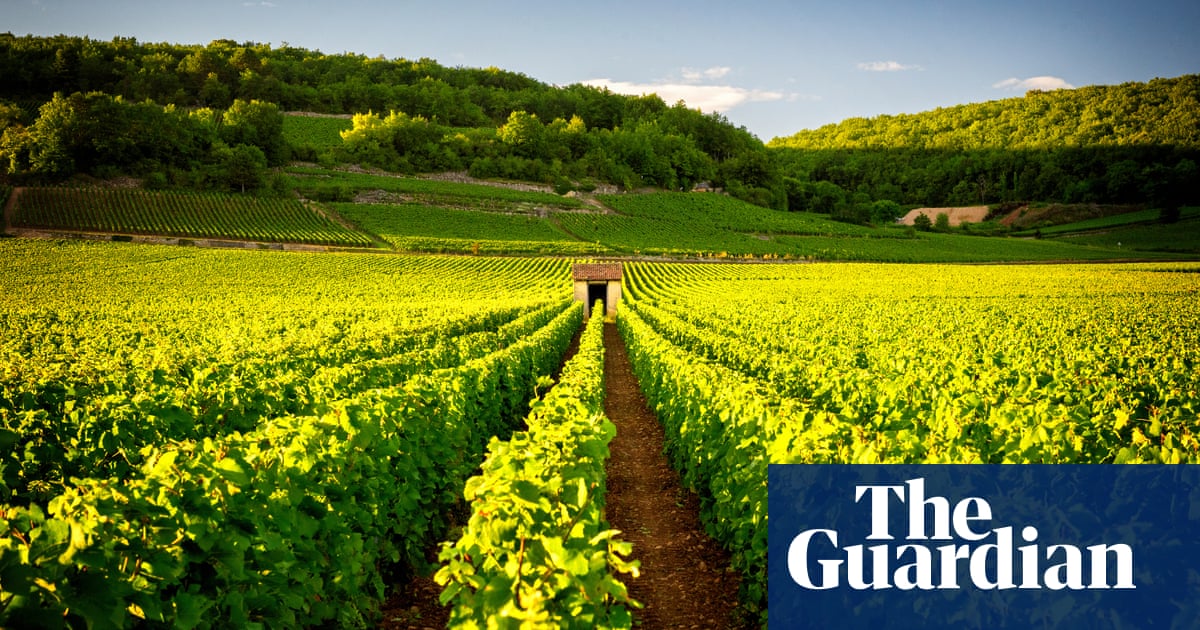Ifind myself using the phrase “relative value” more and more these days. You know, when you buy something you think is a good deal, because you’re comparing it with something that’s infinitely more expensive, so it just feels as if you’re saving money. Buying Baylis & Harding hand soap because Aesop is £33. Renting a small room in London for more than £1,000 a month because at least you’re not paying £2,000 for a place to yourself. A few months ago, people tried to coin this school of thought as “girl math”’, but we are all equally guilty of this specific kind of economic reasoning.
Relative value is how you get what you want for less (but still spend the money anyway), and whatIwantis affordable white burgundy. I’m not going to get it, of course, but I can certainly spend what little money I have on something that’s close enough.
Enter aligoté. It’s the second most-planted white grape variety in Burgundy, and a cross between pinot noir and gouais blanc. Historically, aligoté has been less valued than chardonnay, the iconic white burgundy, so it’s been less widely planted or rooted out altogether to make way for the latter. It was popular on the Côte d’Or pre-phylloxera, but when new vines were grafted on to American rootstocks afterwards, aligoté became even less of a priority. And low demand meant growers gave it even less attention, resulting in unripe, thin wines that until recently tarnished its good name. Aligoté is also casually accepted as the original second ingredient in a kir, alongside creme de cassis, which were mixed together by the mayor of Dijon, Félix Kir, after the second world war to create a drink that showcased the region’s produce.
If aligoté has always played second fiddle to something, it’s now slowly edging nearer the spotlight (with me behind it, shoving furiously), not least because it comes from a similar climate and similar soil to Burgundian chardonnay but, instead of costing in the £100s, it tends to rest around the £15 mark. Quite often, a producer’s aligoté is grown only a stone’s throw from their esteemed chardonnay plots, so if you’ve been priced out of your favourite white burgundy, this might well be the place to look. After all, it’s all about relative value.
There’s even a group,Les Aligoteurs, of some 75 winegrowers, mostly from Burgundy, that is dedicated to proving the ambition and promise of this underdog grape. And, last year, in celebration of its 150th birthday,the Wine Societyimagined the future of wine by developing 10 cuvées with its winemakers, and an aligoté made the grade, not least because it’s a late-ripening variety, so is expected to thrive in a constantly warming environment. There’s more than one good reason this grape may well stick around.
Domaine desCôteaux du Val Lamartinien Bourgogne Aligoté 2022£11.55 Vinatis, 12.5%. Citrussy, simple and floral: a great gateway into aligoté.
Chatel-Buis Bourgogne Aligoté 2023£14 Waitrose, 12.5%. Fresh, acidic and rousing. The supermarket website suggests adding “a splash of cassis”. Over my dead body.
The Wine Society’s Generation Series Bourgogne Aligoté 2022£18 The Wine Society, 12%. Made by iconic vigneron Sylvain Pataille, whose wines go for at least £10 more elsewhere.
DomaineHenri Naudin-Ferrand Bourgogne Aligoté Mallon 2022£20 Emile Wines, 12.5%. A buttery, long-time favourite.
